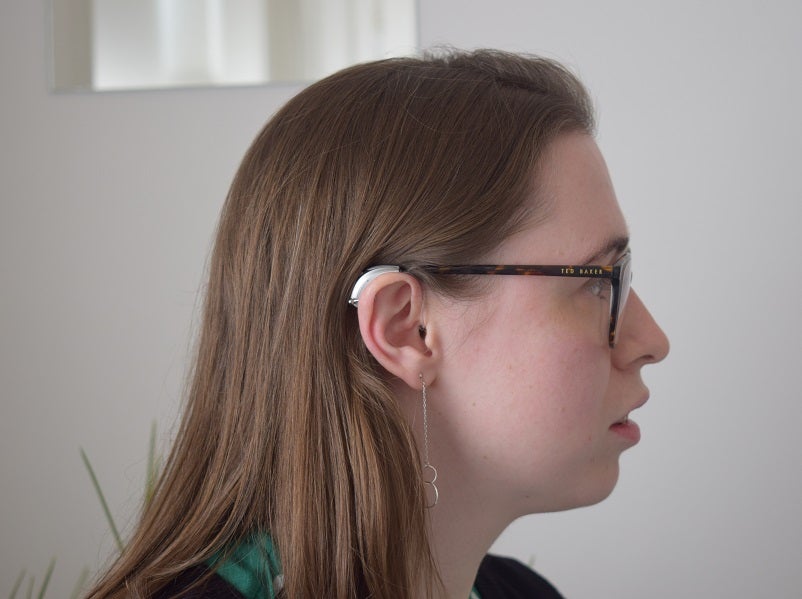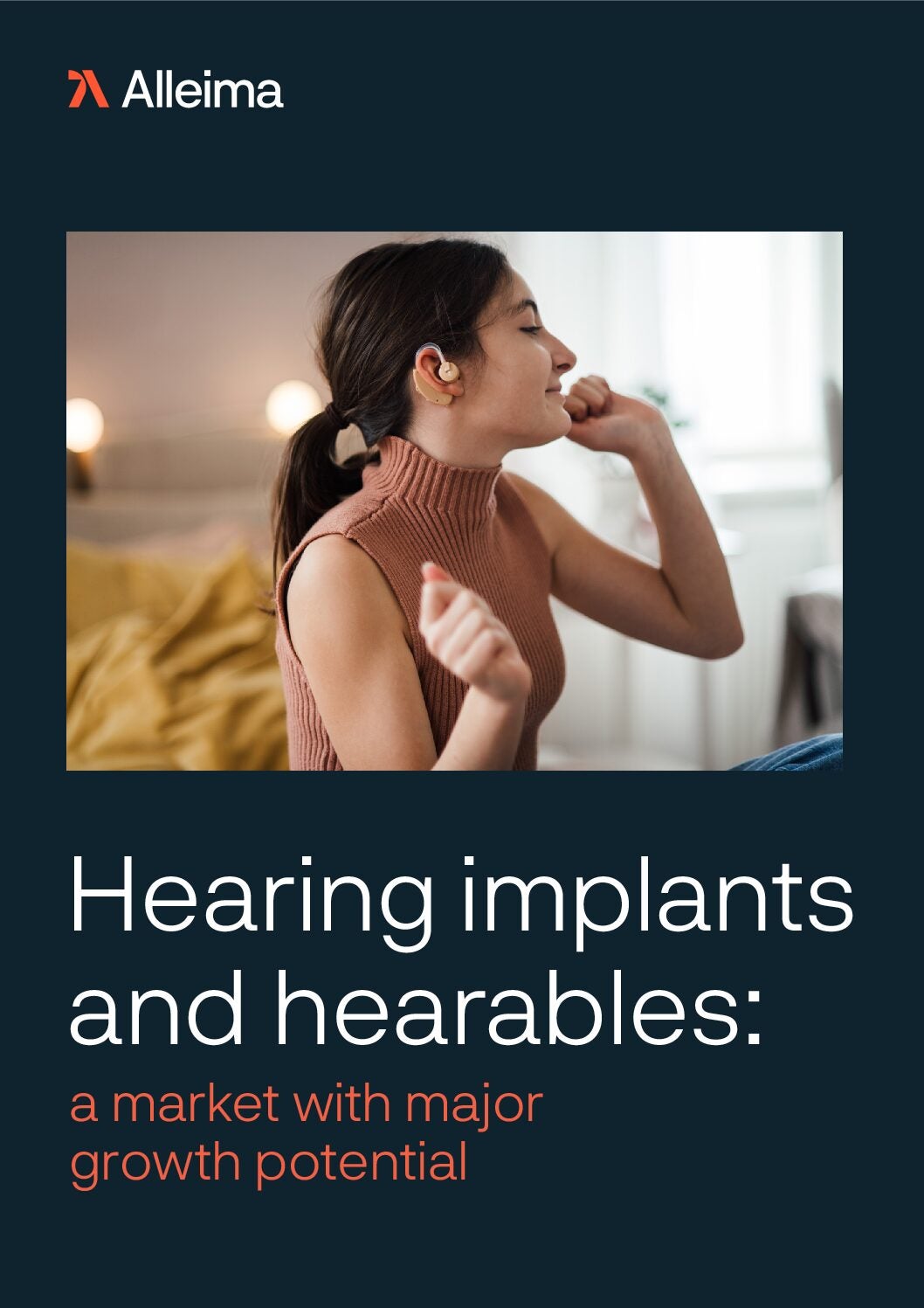
Although hearing aids have existed in some form or another since the 1600s, innovation has accelerated rapidly in the last three decades or so. Today, wireless, rechargeable hearing aids that can be connected to smart phone apps using Bluetooth are becoming the norm.
US-headquartered Starkey Hearing Technologies has taken this smart, connected hearing aid another step forward with its Livio AI product. These so-called ‘healthable’ hearing aids are starting to bridge the gap between the medical and consumer tech markets, winning recognition for their potential to transform accessibility by TIME magazine in its 2019 list of the 100 best inventions.
The company’s UK technical director Paul Lamb explains: “The idea was to create a multi-purpose device. We looked at the marketplace and saw that people are very interested in monitoring their own physical health, and they want to stay connected, so we wanted to combine all of those things without losing sight of providing the best sound experience as well.”
Through the hearing aids, wearers can directly monitor their physical and cognitive activity– the ear has been shown to be a particularly good location for reliable health tracking – as well as answer phone calls, listen to music and communicate with the Amazon Alexa.
‘Healthable’ hearing aids and young people
To achieve this aim, Starkey’s Livio AI comes with a huge range of features linked with its THRIVE app, which makes them suitable for some patients, but not others. Harley Street Hearing operations director and audiologist Matthew Allsop notes: “When we start the process of fitting a hearing, the first thing we do is a lifestyle analysis to make sure we are fitting an appropriate hearing aid to the patient sat in front of us.”
One group of hearing loss patients who are a particularly promising target audience for the Livio AI are people under 40. Younger generations typically have more varied lifestyles, which create fresh challenges for those with hearing loss, and are more used to regular and extensive use of technology – particularly smartphones. Allsop notes there is little point overwhelming people that are less used to using smartphones with all the features of the Livio AI.
How well do you really know your competitors?
Access the most comprehensive Company Profiles on the market, powered by GlobalData. Save hours of research. Gain competitive edge.

Thank you!
Your download email will arrive shortly
Not ready to buy yet? Download a free sample
We are confident about the unique quality of our Company Profiles. However, we want you to make the most beneficial decision for your business, so we offer a free sample that you can download by submitting the below form
By GlobalDataUnfortunately, younger patients are also often slower and more reluctant to see a doctor when they start to experience hearing difficulties. There remains an assumption that hearing loss is associated with old age.
Despite growing up with a parent who wore hearing aids, Sophie Kreitzman, a trained solicitor, but now full-time parent, who currently wears the Livio AI, remembers when she was diagnosed in her mid-20s and told she would have to wear a hearing aid: “I wasn’t ecstatic, I was quite upset…from an aesthetic point of view, because they were clumpy. It was suddenly clear I’m going to have to be wearing hearing aids for the rest of my life.”
However, Allsop suggests maybe by having these devices “more integrated into people’s worlds” could change this preconception. Encouraging younger people to tackle their hearing loss earlier on is particularly important since the numbers of young people with hearing loss is only growing; the WHO estimates 1.1 billion people aged between 12 and 35 are at risk of losing their hearing.
Spotlight on Livio AI’s capabilities
Body and brain tracking is a core component of the Livio AI and is unique to Starkey. It focuses on, “encouraging the user to really keep an eye on their health, not just in terms of exercise, but also keeping the brain healthy,” Lamb explains. “If you can encourage people to be more active, more socially engaged and less isolated that is far better for their health.”
Other elements include translation into 27 languages into the hearing aids and transcription. In addition, wearers can stream music, social media or TV audio and phone calls directly into the hearing aids wirelessly, as well as communicate with the Amazon Alexa through the product. These capabilities are supported through the sensors within the hearing aids.
Despite introducing these consumer tech features to the Livio AI, Starkey has been committed to ensuring these hearing aids still provide wearers with the best sound quality possible. The Livio AI is particularly good at improving the wearer’s ability to hear in noisy environments, Allsop notes.
This is where the artificial intelligence (AI) underlying the product comes into play. According to Lamb, it understands the sounds and inputs coming into the hearing aid, andcan make quicker and smarter decisions in reaction to a changing scenario. The AI has been trained using thousands of sound files to identify different noises – such as a car engine turning on – so it can quickly decide where to adjust the settings of the hearing aid so the wearer can hear foreground noise better.
The wearer can also easily go into the app and further manually adjust, where necessary, to make their hearing experience as good as possible.
Transforming the lives of young people with hearing loss
The Livio AI hearing aids compare starkly to Kreitzman’s experience with other hearing aids. “My previous ones had two settings, and you couldn’t customise it for every setting you were in,” she explains. “[However, with the Livio AI hearing aids,] when I put them in the morning, I then don’t have to think about my hearing at all throughout the day”.
Moreover, the associated THRIVE app allows wearers to create custom settings for certain scenarios. If certain tweaks were made for a particular location – such as an especially noisy restaurant – those precise settings can be memorised in the app, so when the wearer returns to that location, the hearing aids will automatically change to that setting.
Twenty-six-year-old Bolton-based musician, James Holt who was born with hearing loss and also wears the Livio AI agrees about the benefit of the range settings for both his hearing health and his musical career. He explains he has a music setting he uses when listening to music, which brings out certain frequencies and improves the clarity of the sounds.
The expanded bandwidth and settings of the Livio AI also helps Holt in normal conversations. “These hearing aids give me the best chance of actually hearing people and not having to ask them to repeat themselves,” allowing Holt to feel more confident, which feeds into his mental and physical wellbeing.
Combining consumer and digital tech
Rechargeable hearing aids have become the norm over the past decade. For Kreitzman, this aspect of smart hearing aids is particularly liberating – “that’s the best feature from my point of view, [as] I don’t have to worry about batteries.” Kreitzman explains she found it very stressful that with traditional, battery powered hearing aids she had to make sure she had batteries with her wherever she went.
Kreitzman also notes that a unique feature of the Livio AI that is particularly expedient is the mini turbo charger. “If I am going out for the evening or going to London for the day, I just pop my hearing aid in the pouch for a few minutes, and it gives me an extra few hours’ charge.” Allsop also picks out this feature as particularly beneficial to his patients.
Both Kreitzman and Holt note how useful it is to be able to stream music directly into the hearing aids. She explains how uncomfortable it was to wear headphones on top of the hearing aids, and how inconvenient it was to take out the hearing aids to put in earbuds. “[Previously] if anyone asked me anything while I was at the gym, I would have absolutely no idea what the person was saying [even once the music was paused]; it was quite embarrassing. But now if someone comes to talk to me, I can just press pause and I can hear them and have a conversation.”
Linked to this, Kreitzman notes how useful it is to stream a telephone conversation through the hearing aid. The UK’s Action on Hearing Loss charity notes that phone calls are hugely challenging for people with hearing loss, primarily due to the high frequency ranges of calls. “Previously, I would have to be my mobile or landline on speaker, which isn’t ideal, but now I can actually hear every single bit of every conversation very clearly.”
Another big worry for Kreitzman with her previous hearing aids was getting them wet. However, she can now wear the Livio AI to take her children swimming, which is something she loves; “because I had to take my hearing aids out, I always found it very vulnerable as a parent that I couldn’t hear if they needed help.”
Krietzman concludes: “They have transformed my daily life, and [especially] the enjoyment I have with my children.”








